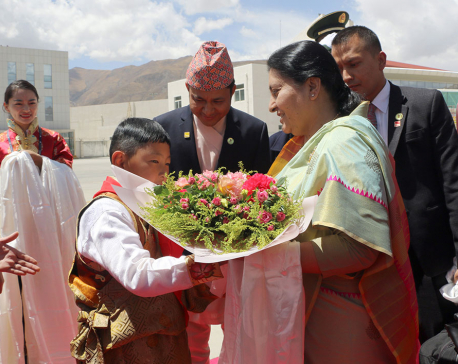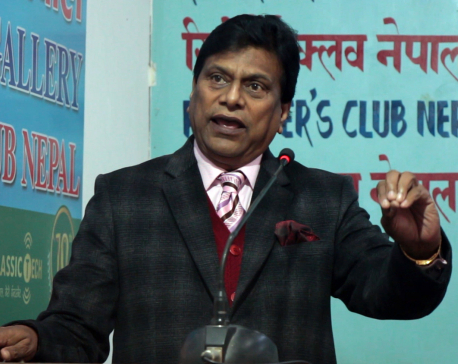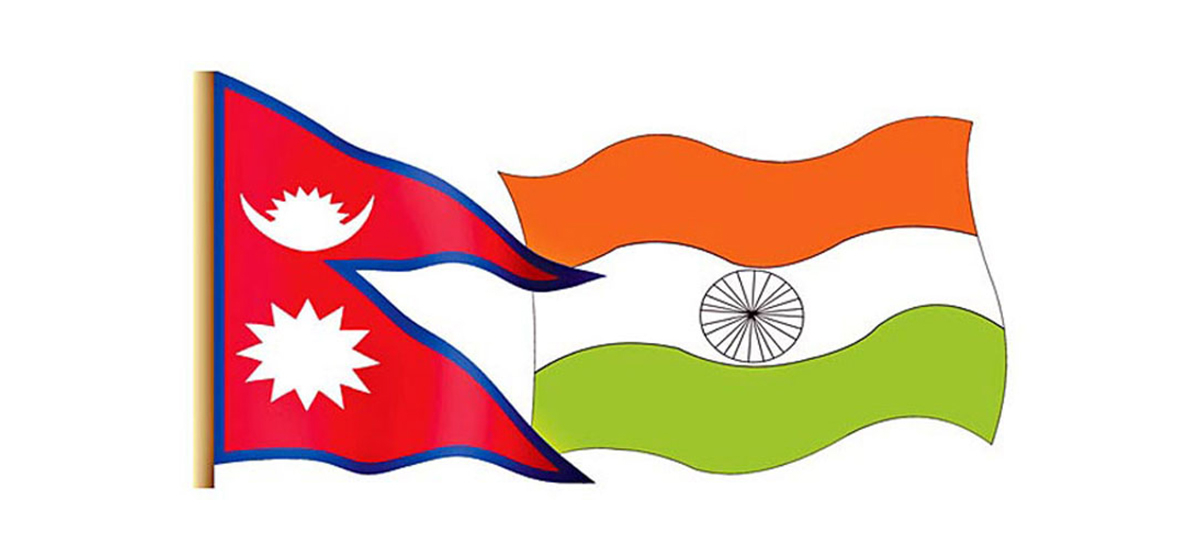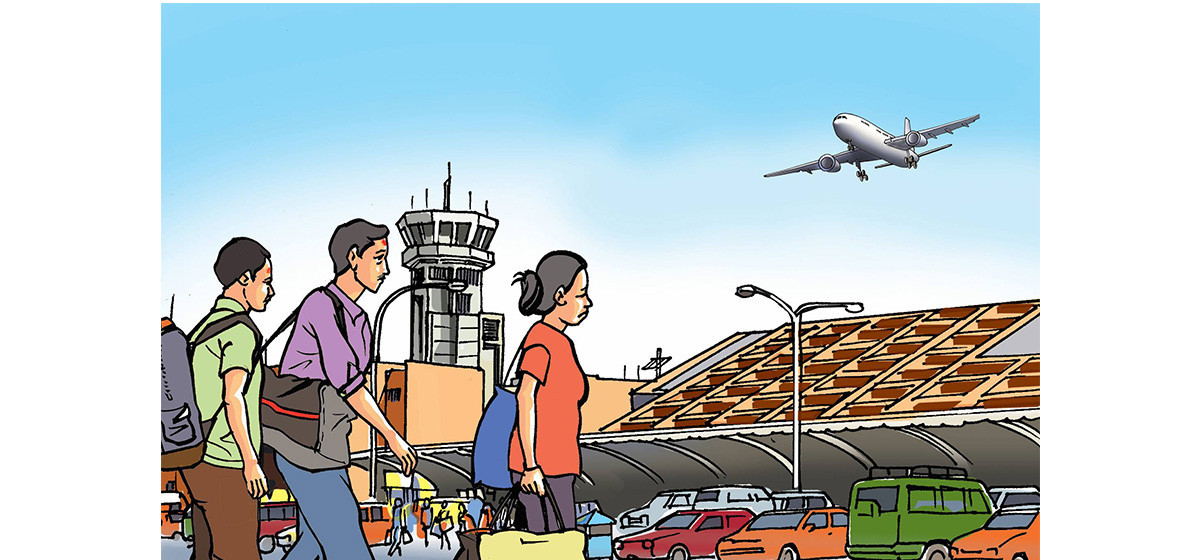
OR
Breakthrough deals with China
Published On: May 1, 2019 02:05 AM NPT By: Republica | @RepublicaNepal
President Bidya Devi Bhandari’s visit to China to participate in second Belt and Road Forum for International Cooperation has been significant for Nepal in more ways than one. First, this was the first state visit by Nepali president to China and she was accorded deserved importance. Bhandari held a bilateral meeting with her Chinese counterpart Xi Jinping at the Great Hall of the People on Monday, following which various agreements have been signed. One notable development has been signing of Protocol on Implementing Agreement on Transit Transport, which was pending since the deal toward that effect had been reached during Nepali Prime Minister K P Oli’s visit to China in March, 2016. Transit protocol officially gives Nepal access to Chinese ports of Tianjin, Shenzhen, Lianyungang and Zhanjiang via as many as six customs points—Tatopani, Kerung, Kimathanka, Korala, Yari and Olangchunggola. Of course, much homework needs to be done for Nepal to be able to use these routes for trade with China. We are yet to develop infrastructure within Nepali side and it might take considerable length of time and resources but in the long run access to trade through Chinese ports will provide Nepal much-needed alternative routes and significantly reduce our sole dependence on India for third country trade.
Another notable achievement is inclusion of Nepal-China Trans-Himalayan Multi-Dimensional Connectivity Network, including cross-border railway, in the joint statement of BRI conference. This lays the groundwork for expanding rail and road connectivity with China. Challenges, however, remain on this front too. Treacherous mountainous terrain on both side of the border will make railway (and roads) construction challenging. And detailed project report for the same is yet to be prepared. There is the issue of economic viability of the projects, which needs to be worked out, and funding modality for these projects is yet to be finalized. Nepal and China have also exchanged minutes of meeting on Strengthening Assistance Co-operation in the Field of Livelihood in the Northern Region of Nepal. China has agreed to provide one billion Yuan to develop China-aided projects in Nepal. There have been agreements on economic and technical cooperation, preventing theft, clandestine excavation and illicit import and export of cultural property, Memorandum of Understanding (MoU) on Co-operation on Standardization between Nepal Bureau of Standards and Metrology (NBSM) and Standardization Administration of China (SAC).
Despite the challenges and pending works on various fronts of these agreements, they are of great importance for Nepal to increase Nepal-China cooperation and expanding connectivity networks with northern neighbor. Nepal’s focus now should be on following up on these progresses and move forward. Often big agreements with our neighbors and development partners—be it with China, India or the United States—generate hope and optimism but such hopes soon die out because the agreements are either not followed through or they simply don’t get materialized. This should not be the case with any development agreements with any country, including China. The government of K P Oli deserves appreciation for the initiative to diversify Nepal’s trade and transit facilities. But the real success lies in ability of the government to ensure effective implementation. To repeat the cliché, an agreement that does not materialize is as good as no agreement.
You May Like This

President Bhandari in Lhasa
BEIJING, April 30: President Bidya Devi Bhandari who has been on the nine-day State visit to the People’s Republic of... Read More...

‘The country should be developed by preserving nature, not by destroying it’: Prez Bhandari
KATHMANDU, Dec 6: President Bidya Devi Bhandari has stressed on the need to establish the feeling that ‘the country should... Read More...

President's political advisor Yadav rules out president's rule in Nepal
KATHMANDU, Feb 3: Political affairs advisor to President Bidya Devi Bhandari, Lal Babu Yadav, on Wednesday, ruled out the imposition... Read More...



Just In
- Private sector leads hydropower generation over government
- Weather expected to be mainly fair in most parts of the country today
- 120 snow leopards found in Dolpa, survey result reveals
- India funds a school building construction in Darchula
- Exploring opportunities and Challenges of Increasing Online Transactions in Nepal
- Lack of investment-friendly laws raises concerns as Investment Summit approaches
- 550,000 people acquire work permits till April of current fiscal year
- Fixing a win by outlawing dissent damages democracy














_20220508065243.jpg)
Leave A Comment